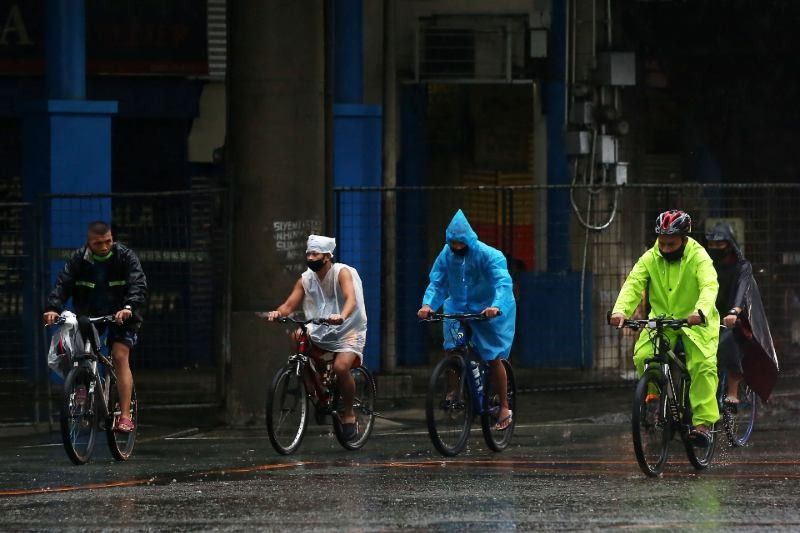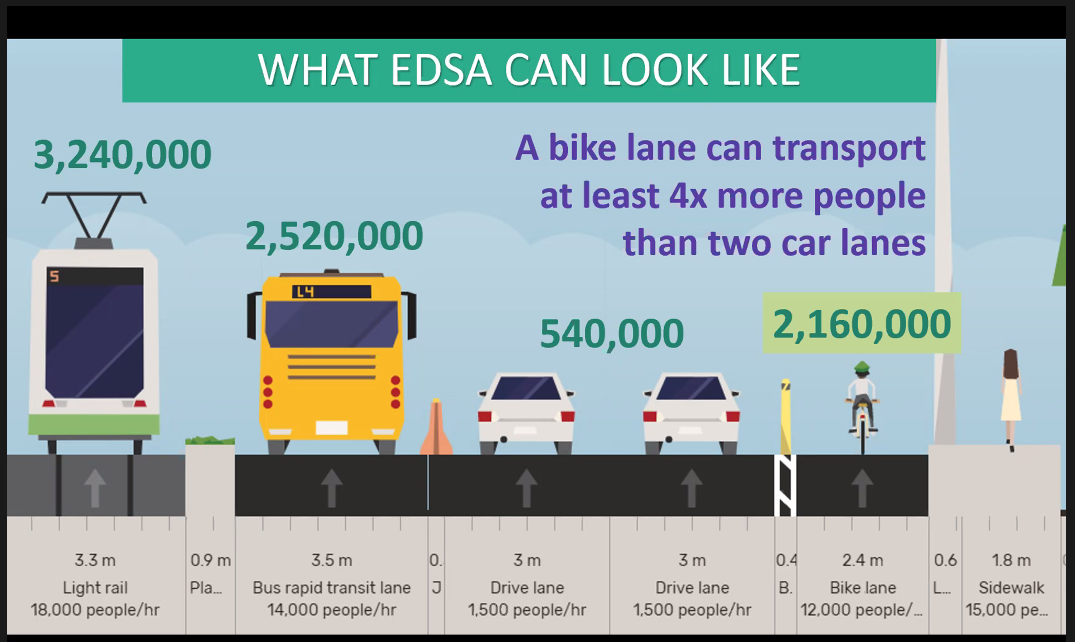Whatever happened to: Metro Manila bike lanes

MANILA, Philippines — It was June last year when the government released to much fanfare its EDSA reform plan that will see bike lanes installed in the congested highway. Nearly 8 months since then, no single bike lane can be found in that area.
EDSA is a reflection of a sluggish broader project to build 523 kilometers of protected bike lanes nationwide, funding for which was allotted under Republic Act No. 11494 or the Bayanihan to Recover as One Act. Funding provisions under Bayanihan II were supposed to expire last December, but got extended until June— leaving government only 5 months to complete the bike lanes.
“The commitment of these agencies to push for a bike lane network might not be very high. We haven't heard the real reason for the delays,” Jedd Ugay of AltMobility PH, a commuter advocacy group, said in an online forum on Monday.
“If there are a lot of implementing agencies, the way bureaucracy works is that none of them move because there's no higher agency telling them, ‘do this,’” he said.
According transport department data, only around 29 kilometers of bike lanes had been built since the Bayanihan II was enacted.
Why does this matter?
Against the backdrop of the coronavirus pandemic, transportation options for workers required to report to work physically have already been scarce as it is. In the wake of the suspension of public transportation during the general community quarantine, thousands looked to cycling to report to work.
Even with lockdowns eased, the public’s preference for alternative transport options remained. According to Social Weather Stations, a pollster, 85% of Filipinos across all areas and socio-demographic groups believe their city or municipality can be a great place for walking and cycling. A bigger 87% also agreed that roads will be better off if public transportation, bicycles, and pedestrians are given priority over private vehicles.
The Department of Labor and Employment in its 2020 labor survey also found that Filipino workers generally want to secure more bike lanes in the Metro. Survey results found that 78% of the total respondents would still use bicycles going to work, even if there were other accessible forms of transportation.
FROM INTERAKSYON: COVID-19 cyclists: Expanding bike lane network can lead to more inclusive cities

Where are we now?
Both transport and public works departments said they support the plan, and reiterated commitments to build more bike lanes before the year ends.
“The DOTr is committed to construct the NCR Bike Lanes, similar to the ongoing bike lanes construction projects we have in Metro Davao and Metro Cebu,” Transport Assistant Secretary Goddes Hope Libiran said in a text message.
But at least for Metro Manila, this is easier said than done. Shortly after the EDSA reform plan was unveiled last June, the Metropolitan Manila Development Authority (MMDA), under the former leadership, opposed proposals for pop-up bike lanes, citing rider safety.
Under Benhur Abalos, who just took office last month, bike lanes are supposedly getting a better reception but his office appealed to give them more time. MMDA oversees the traffic situation in Metro Manila and therefore any plans altering that would have to gain the agency’s support.
“We aren’t seeing any delay or bottleneck in the bike lanes. Let’s not put color into things. The [Department of Public Works and Highways] is still finalizing the design in terms of ensuring the safety of bikers if and when they put the lanes in EDSA,” Michael Salalima, Abalos’ chief of staff, said by phone. DPWH declined to comment.
“With Chairman Abalos being new, his marching order was that with safety as the paramount consideration, for as long as the bikers’ safety will be assured, we are in support of a bike lane in EDSA,” he explained.
As for the EDSA reform plan itself, few things had been realized. For instance, bus stops had been built, apart from a dedicated bus lane. But other components remained missing like pedestrian lanes and bike lanes, which transport advocates said would make EDSA— and other public roads— safer and more conducive to walking.
As it is, it seems the likes of Ugay and the rest of AltMobility would have to lengthen their patience. “The bidding will have to undergo different phases and processes. So it will take time,” Salalima said.
Transport economist Robert Siy can only hope for the best. “Definitely, they’re (DOTr) supportive, and we believe this is a major change in their policy for improving mobility for all Filipinos,” he said in the forum.
“But we hope this will also be carried by other agencies,” he added.
- Latest
- Trending

































